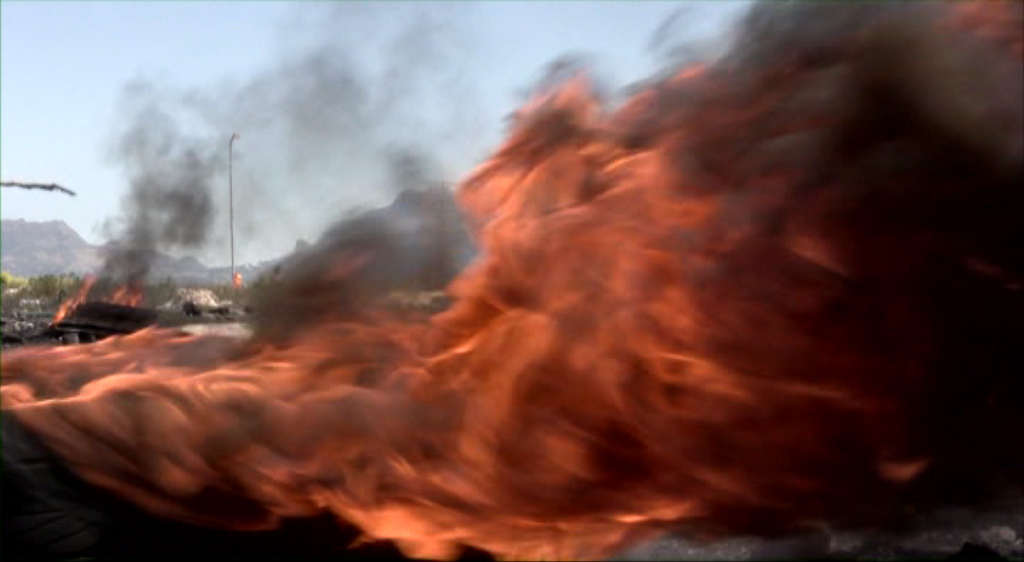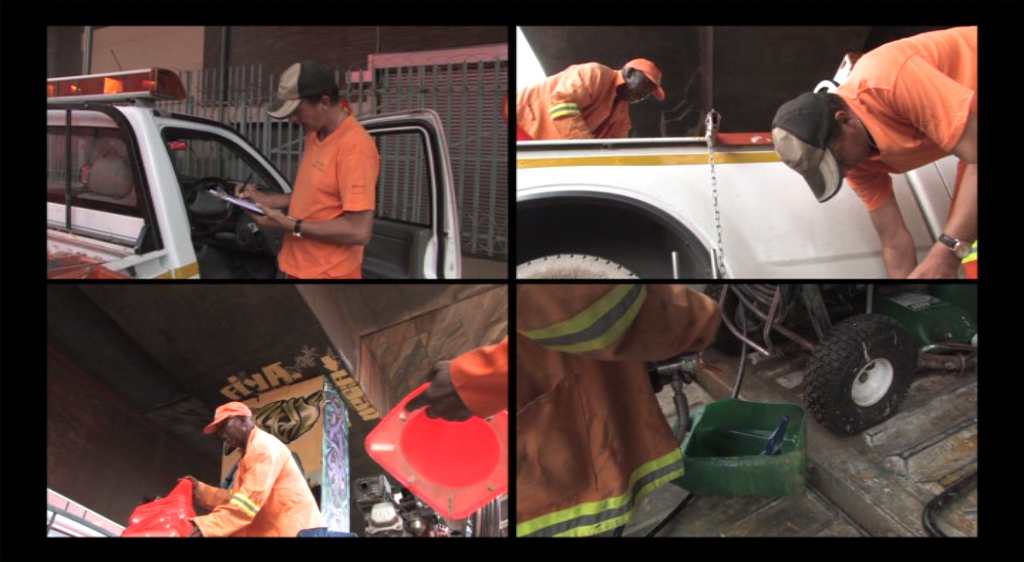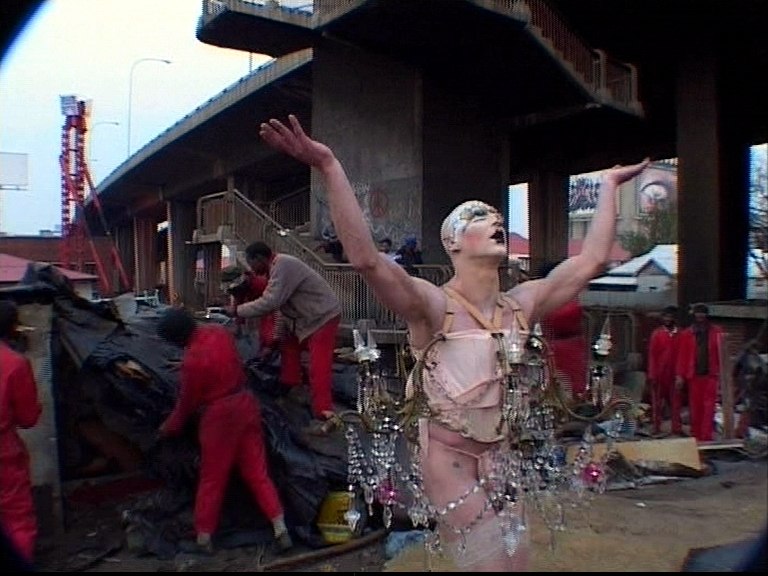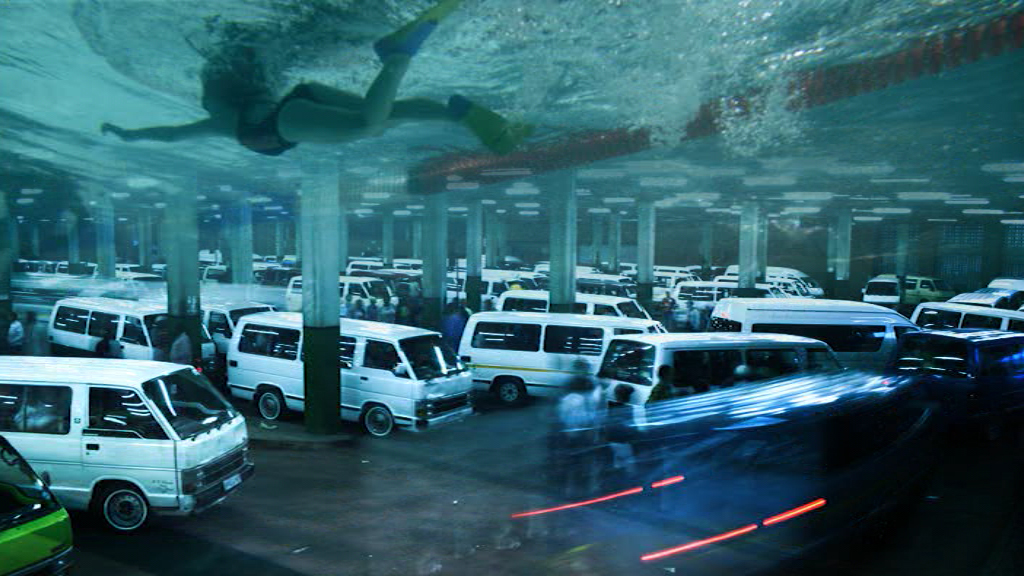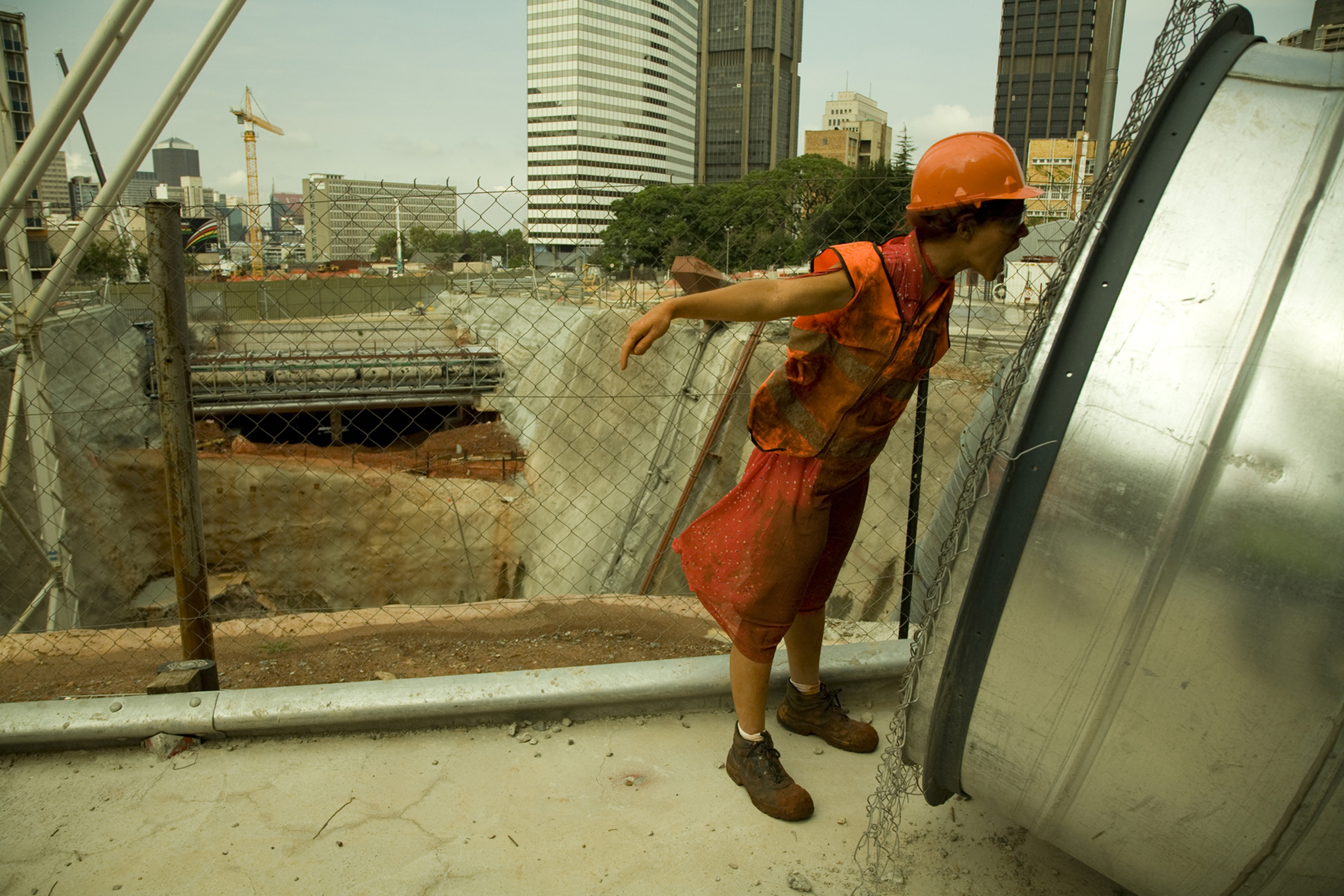THE UNDERGROUND, THE SURFACE AND THE EDGES: A HAUNTOLOGY OF JOHANNESBURG
VIDEO PROGRAMME CURATED BY ANTHEA BUYS AND LEORA FARBER
21 January, 2011 | Afropolis. City, Media, Art. Rautenstrauch-Joest-Museum-Kulturen der Welt, Cologne.
24 January, 2011 | The Free University of Berlin
15 June - 2 July, 2011 | Michaelis Gallery, University of Cape Town
THE UNDERGROUND, THE SURFACE AND THE EDGES: A HAUNTOLOGY OF JOHANNESBURG
Video programme curated by Anthea Buys and Leora Farber
More than merely the stacked silhouettes of a distant metropolis, a cityscape has a story to tell. It traces the movement of wealth and the distribution of resources in a city; it bears witness to its history and influences, and asserts the city’s aspirations to more wealth, higher buildings, and greater infrastructures. The video programme titled The Underground, the Surface and the Edges: A Hauntology of Johannesburg, plots a complex cityscape through a selection of video works by South African artists who are interested in the workings of African cities, specifically Johannesburg, and the people who live in them. The programme comprises a compilation of 15 video artworks, most of which take the city of Johannesburg as their subject matter, source material or provenance. In the programme, we explore the dialectical relationships between the strata of Johannesburg that characterise the surface life of the city and its wealth-deriving underground spaces, and the concomitant activation of a third, liminal, space, namely, ‘the edges’.
This project took as its starting point the relationship between the surface life of Johannesburg and its historical underground spaces (both real and metaphorical) which exist largely because of the city’s mining origins, as well as its ‘edges’. We examine the relationships between these urban spatialities as they are articulated in the programme. We pay attention to how the uses and meanings of these spatialities may have shifted, or failed to shift, between their constructions in apartheid-era and contemporary, post-apartheid South Africa.
We propose that the underground, the surface and the edges are at once identifiable modalities which emerge coherently in the works discussed and interconnected inflections of a singular urban phenomenon.
Building on this, we observe that the dialectic between the underground and the surface in Johannesburg contains echoes of the literary and artistic tropes of burial and resurrection and Jacques Derrida’s (1994:xvii) notions of ‘hauntology’, in which he considers the spectral or ghostly as that which “happens” between two apparently exclusive terms, such as “life and death”. In considering ‘Johannesburg’ as a metropolitan phenomenon in the selection of works, we speak of a spectral, interstitial realm that exists in between the strata of surface (the stratum of life, goodness, health and visibility) and underground (a catacomb where the dead, the corrupt and the ailed are hidden). We thus offer a view of being-in-Johannesburg in which inhabiting takes place in-between, or in-passage between, porous, fluid spatial terms, wherein constant mediation takes place.
The programme features works by the following artists: Berni Searle, William Kentridge, Steven Cohen, Anthea Moys, Stephen Hobbs and Marcus Neustetter, Johan Thom, Zen Marie, Maja Marx and Gerhard Marx, Mocke J van Veuren and Theresa Collins, Nina Barnett, Minnette Vári, Die Antwoord, and Leora Farber.
Source cited
Derrida, J. 1994. Specters of Marx. Translated by P Kamuf. New York: Routledge.
PROGRAMME:
Click here for the programme

